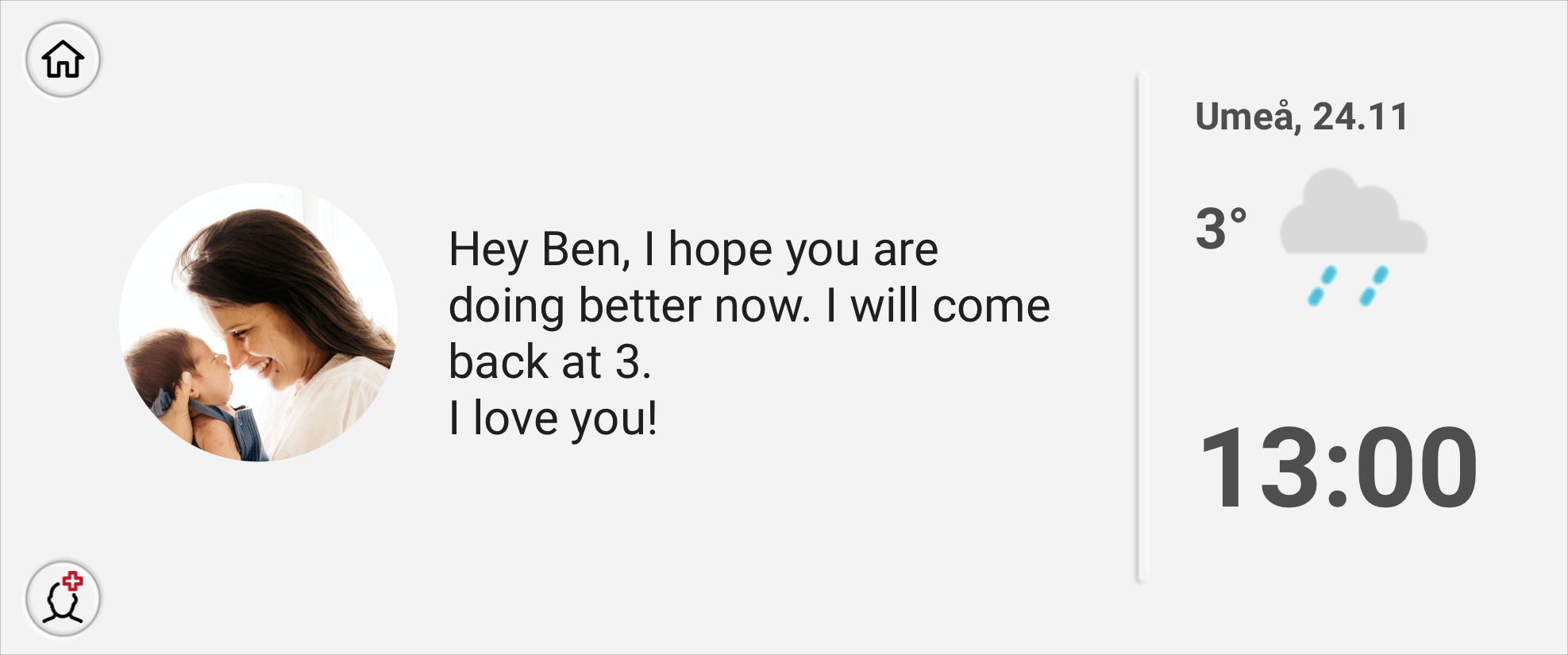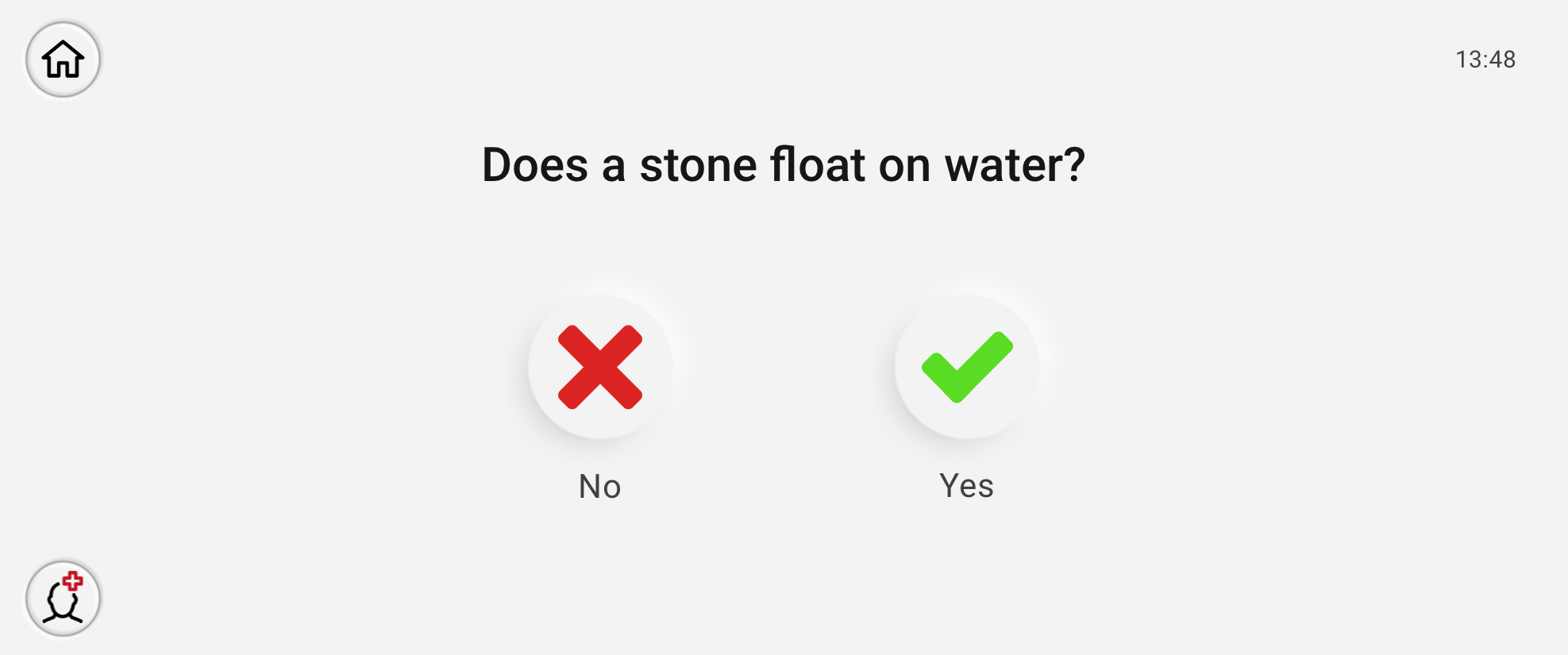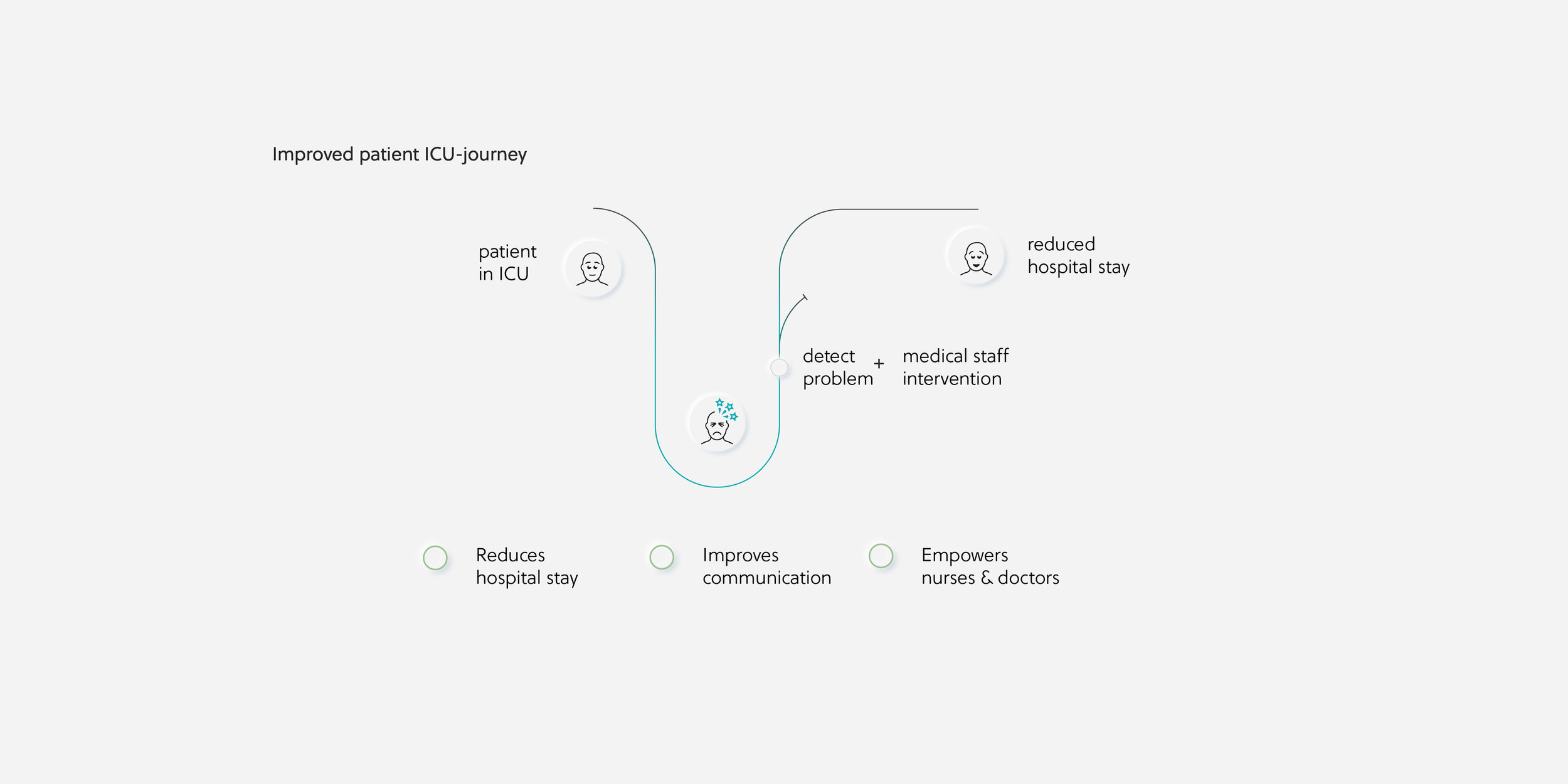Context
Many patients suffer from severe mental problems during or after their treatment in the Intensive Care Unit (ICU). This slows down the recovery process and has long term effects on the patient’s quality of life. Despite its importance, mental health is not addressed sufficiently in the ICU.
To tackle this problem the nurses need to be empowered to precisely assess the patient’s mental condition while enabling both the patient and the health care professionals to communicate seamlessly despite the patient’s physical abilities.
Solution
Sova allows the healthcare personnel to get a better understanding of the patient’s pain levels, activity, sleep and emotion and the product system enables the patient to communicate and express their needs via an interface that is controlled through eye tracking.
2021
Getinge
Industrial Design, User Research
10 weeks
Year
Partner
Type
Duration
Project video
Patient Interface
Patient tracking
A camera integrated into the screen detects the patients movements and activity. An infrared system tracks the patients‘ eyes to allow them to interact with the display to communicate.
Product ergonomy
A back-site handle allows to adjust the positioning of the screen by hospital personal, relative to the patients head position. The curved screen is more ergonomic to use with the eye and gives the user a more personal feeling.




Patient Interface
Via the interface the patient can receive relevant information about their procedures, schedule as well as messages from relatives. They can also point out any needs, feelings of discomfort or pain they might have so the healthcare professionals can react accordingly.
Assessing the patients cognitive abilities
The complexity of the interface adapts to the patients cognitive abilities, therefore game like assessments are forwarded to the patient that also help explaining the patient interface’s functions.
Context & Research
Mental health in the ICU
The mental health of patients in the Intensive Care Units (ICU) plays a vital role in the recovery time and cost for the healthcare system. Mental problems are very common and can appear at any time, becoming more likely the longer a patient stays in the ICU.
Mechanically ventilated patients and long term cases are very likely to experience mental issues. Mental conditions experienced in the ICU can reach all the way from bad dreams and continuous discomfort to delirium and post traumatic stress syndrome.
Early recognition of signs and appropriate management are key to prevent extensive cost for the healthcare system due to affects such as increased need for mechanical ventilation, increased hospitalization and increased mortality. Despite its importance, mental health is not addressed sufficiently in the ICU.
Patient stressors
The main stressors in the ICU which strongly affect the patient‘s mental condition are pain, anxiety and a lack of quality sleep and rest.
To tackle these problems the nurses need to be empowered to precisely assess and address the stressors and indicators for mental degradation.
At the same time both the patient and the healthcare professionals need to be able to communicate seamlessly despite the patient’s physical condition (Patients can not talk and move). These soft vital signs which are not yet picked up by machines are difficult to assess.
Concept summary
Sova is a system to monitor aspects of the patient‘s mental health continuously while allowing the patients to communicate their needs. It consists of a three parts. A sensor on the patient‘s head monitors the patients sleep patterns and brain activity. A patient interface with an integrated camera monitors the patients activity and allows the patient to communicate any needs, discomfort or pain via eye tracking.
On the interface for the healthcare personnel the gathered information is visualized. With the information Sova helps the healthcare professionals to get a better understanding of the patient’s pain, activity, sleep and mental state. With Sova they can provide a more personalized, humane treatment which takes into account both the physical and mental state.
Patient Sensor
Patient sensor
A sensor on the patient’s forehead detects brain waves which gives conclusions on the patient‘s level of consciousness, pain and sleep patterns. Occurring pain can be detected by measuring muscular tension in the skin.
Nurse Interface
Patient Overview
ICU’s can be busy while nurses and doctors have limited time for each patient. Knowing which patient needs attention can be valuable.
ICU cam
The ICU cam is a standardised procedure with standardised questions to assess hospital patients cognitive abilities.
Mental Health Index
The patients mental wellbeing is visualized on the nurse interface. This allows continuously assessment over time of the patients on the ICU.
Overview of multiple patients
Sova provides a platform for healthcare professionals and patients to communicate more effectively and empowers the personnel to monitor the patient‘s mental health and indicators for its degradation continuously.



















